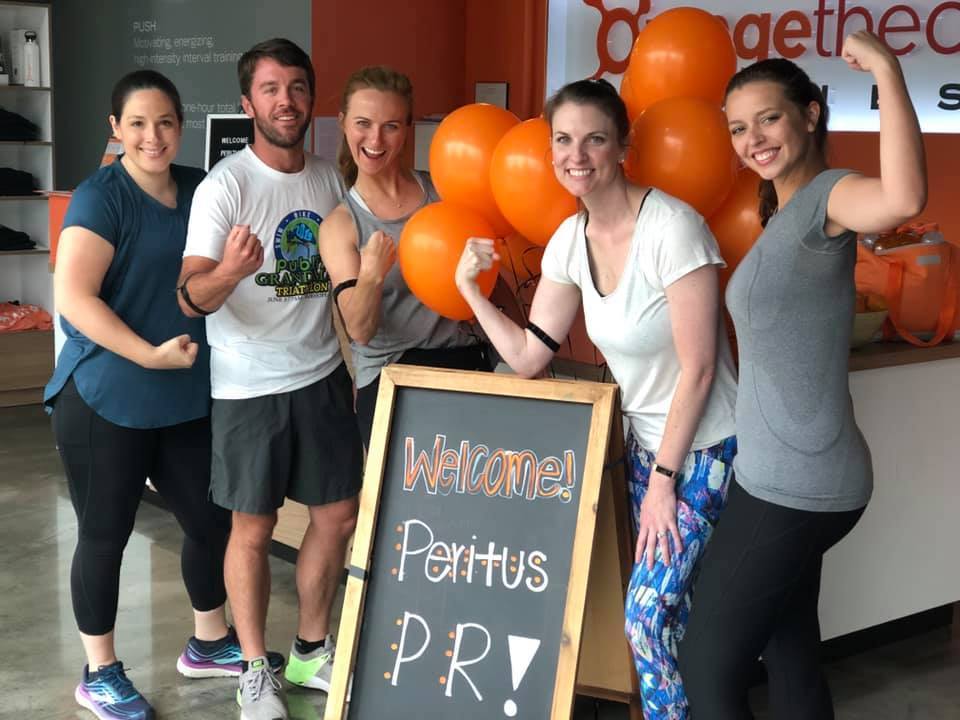How to Expand Your Company’s Wellness Perspective
By Hanlon Walsh
July-August 2020
It isn’t a secret that wellness has become an increasingly common trend in today’s workplaces, as more companies look to expand their employee wellness programs.
A recent study by the marketing agency Wunderman Thompson Health found that 86 percent of millennials value being healthy over being wealthy, reflecting a broader generational shift that demands more wellness-minded workplaces.
As a millennial myself, I value many perks of employment which, when not offered, can be deal-breakers for our generation of job seekers — remote flexibility, generous paid time off, tightknit culture, aligned values and wellness offerings.
As the newly minted “chief wellness officer” at Peritus Public Relations, I lead our firm’s wellness initiatives as my side hustle, in addition to managing clients. Like many other small businesses, we lack the corporate resources to offer personal Fitbits, productivity allowances and meditation rooms, but we prioritize wellness that fits the particular makeup of our company.
Too often, we measure wellness by exercise and healthy eating, but the physical benefits they provide are not the only spokes in the wellness wheel. I realized this when our team tried a group workout class at Orangetheory Fitness in June 2019 for National Employee Wellness Month.
Being a naturally active person, I jumped at the chance for some midday exercise. But when some of my co-workers were reluctant to participate, I realized that working out is not everyone’s preferred way to relieve stress. A year later, we have implemented weekly wellness challenges that let everyone bring their own personal spins on wellness, from virtual Jeopardy games to cooking demonstrations.
Implementing effective wellness initiatives means understanding what your team values. Here are three ways to expand your company’s wellness perspective:
Social wellness
As PR professionals, we are naturally inclined to build relationships — with clients, the media, etc. But to enhance wellness, the strongest connections we can build are those within our own teams. After all, we spend more time with our colleagues than we do with our families. We understand one another, what makes us tick and what stresses us out. We celebrate our professional successes together and support one another when personal matters interfere with our work.
But building meaningful connections within our teams requires investing in those relationships beyond water-cooler chat. To understand the environments your new employees thrive in and how best to support them, consider organizing retreats or personality exercises such as the behavior-assessment tool DiSC or a “color personality test” that rates people’s leadership abilities according to colors that stand for different character traits.
You might start by taking your co-workers out for coffee or drinks to connect with them on a personal level. Avoid work chatter so you can gain insights into their personal hobbies, passions, family lives and goals.
When we get to know our colleagues first as people, not as task machines with deadlines stamped on their foreheads, we build a foundation of mutual trust and respect that can make conflict easier to resolve, difficult days easier to manage and special occasions more enjoyable. Establishing authentic relationships with our co-workers can also help us focus on fulfilling other workplace-wellness needs.
Wellness from managing time
We’ve all heard Benjamin Franklin’s aphorism “time is money.” In public relations, time measures our livelihoods. Time controls the hourly rates and monthly retainers that we bill for communications services. Time is often how we justify salary requirements and raises. It dictates funding requests and marketing budgets.
Successful teams respect the value of time and understand its implications for productivity and financial outcomes. We should invest time in efforts that help achieve goals and stop wasting time on projects that do not. For PR agency practitioners, this means investing in long-term client partnerships and having the courage to turn down offers that don’t use our resources strategically. For in-house PR professionals, every hour of the work day should directly support the organization’s goals.
Managing time also means protecting workforces from unnecessary stressors that might cause burnout otherwise. In an industry that demands constant connection, how can we maintain a healthy work-life balance? When we respond immediately to after-hours emails, we set an unrealistic expectation that we are always available, even if the other person’s request can wait until the next day.
Time is our most precious commodity, and how we spend it affects our bottom lines and our personal wellness. If we don’t value our time, how can we expect that others will?
Intellectual wellness
In a constantly evolving business, we must always thirst for knowledge. But how can we stay stimulated and continue to grow professionally at every stage of our careers?
In addition to what we learn from podcasts, webinars and TED talks, we can soak up knowledge and inspiration from unexpected sources. Regardless of their experience level, everyone in our networks can offer insights that contribute to our ongoing development.
Younger PR professionals do well to find career coaches and listen to their CEOs’ media interviews and learn how they communicate. More experienced PR managers might ask digitally savvy interns for primers on the Chinese TikTok social network for sharing short videos, so they can learn how to connect their brands with younger audiences.
Mentoring opportunities don’t have to be confined to our own industry. Public relations professionals can connect with a diverse mix of people in other fields to learn more about their career paths, what motivates their work and the worries that keep them awake at night.
You might start by volunteering to serve on a nonprofit board or committee where you can meet people from different walks of life who are passionate about similar causes. Rethinking our constant urge to improve ourselves and embracing old-fashioned conversations instead can help broaden our networks and fuel inspiration in surprising ways.
Why wellness?
With the “wellness generations” of millennials and Gen Z expected to make up nearly 58 percent of the U.S. workforce by 2030, we should encourage a pro-wellness mindset so that PR remains an attractive profession. But we have to remember that wellness means more than exercise classes. By adopting a more holistic approach to wellness, we can build team chemistry, improve our companies’ bottom lines and foster professional growth.
photo credit: peritus public relations.



